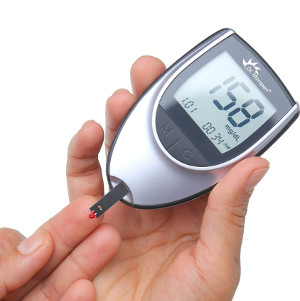Doctors and health care system administrators agree that type 2 diabetes is becoming a major problem. It’s also generally agreed that diet is a major factor in developing the disease, but a new study shows that other lifestyle factors may have a role in promoting type 2 diabetes…
 Type 2 diabetes will increase by 54 percent to more than 54.9 million Americans by 2030.
Type 2 diabetes will increase by 54 percent to more than 54.9 million Americans by 2030.
Annual deaths attributed to diabetes will climb by 38 percent to 385,800. Total annual
medical and societal costs related to diabetes will increase 53 percent
to more than (US)$622 billion by 2030. (Source:2017 Study)
First, the bad news: No more all-nighters!
Losing as little as 6 hours of sleep from your regular night’s rest may reduce your liver’s ability to produce glucose and process insulin, increasing the risk of metabolic diseases such as hepatic steatosis (fatty liver) and type 2 diabetes. The findings of the mouse study are published ahead of print in the American Journal of Physiology – Endocrinology and Metabolism.
Development of type 2 diabetes has long been associated with eating more and exercising less. But researchers from the Toho University Graduate School of Medicine in Japan wanted to determine exactly what was going on. “It was not clear whether glucose intolerance was due to the changes in food intake or energy expenditure, or to the sleep deprivation itself.”
So, they ran a mouse study with twp parallel groups of mice, in which one group was kept awake for six hours each night (‘sleep deprivation’), while the control group was allowed to sleep as desired. The research team offered unlimited high-fat food and sugar water – mimicking lifestyle-related food choices that people make – to both groups prior to the study. During the sleep/wake period, the animals had limited opportunity for physical activity.
After just one 6-hour sleep deprivation period, blood glucose and triglyceride levels were found to be significantly elevated in the test mice, compared with those in the control group. High glucose and high triglycerides are both primary indicators for type 2 diabetes.
Now, the good news: Eat more whole grains!
A new study from researchers at Chalmers University of Technology, in Sweden, and the Danish Cancer Society Research Center not only confirms that eating more Whole Grains can help head off the development of type 2 diabetes, but suggests which Grains to eat and ideal amounts of Whole Grains to consume.
“Most studies similar to ours have previously been conducted in the USA, where people mainly get their wholegrain from wheat,” says Rikard Landberg, Professor in Food and Health at Chalmers University of Technology, and senior researcher on the study. “We wanted to see if there was a difference between different cereals. One might expect there would be, because they contain different types of dietary fibre and bioactive substances, which have been shown to influence risk factors for type 2 diabetes.”
The study followed more than 55,000 men and women for 15 years, tracking their consumption of Whole Grains. Ananysis of the results revealed that those who consumed the highest amount of Whole Grain had a 34 percent lower risk of developing type 2 diabetes for men, and 22 percent lower for women, compared to the group with the lowest wholegrain intake.
“Our results are in line with dietary advice, which recommends switching out foods containing white flour for Whole Grains,” says Landberg. “You get extra health benefits – white flour has some negative effects on health, while wholegrain has several positive effects, beyond protection against type 2 diabetes.”
…And that’s the latest on type 2 diabetes
We’ll keep you posted on developments on this affliction, and others, as they emerge from the labs…
~ Maggie J.

